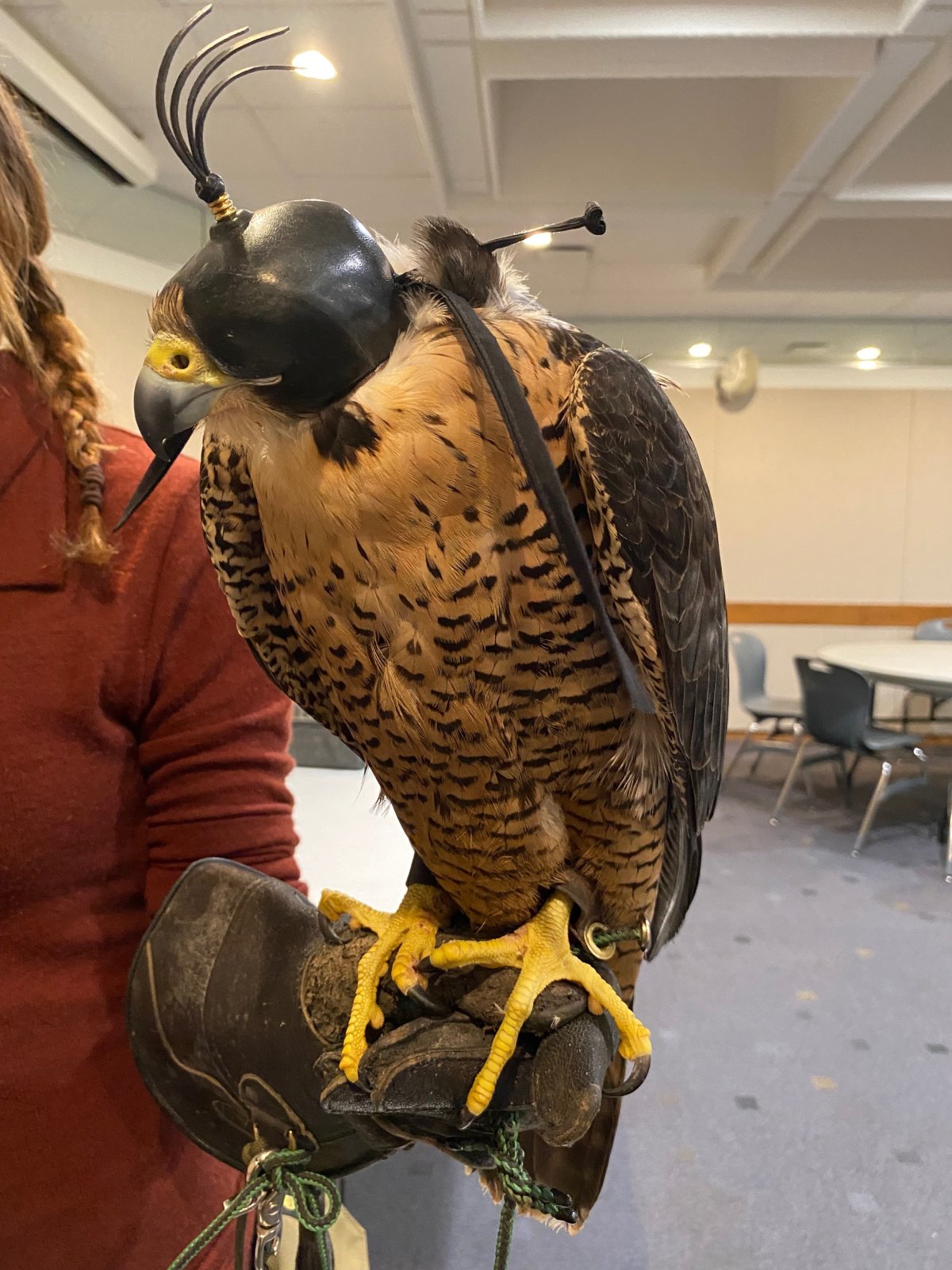The sport of falconry has a long history in the land of the living skies.

By definition, it pertains to the hunting of wild animals in their natural habitat by means of a trained bird of prey.
Dana Green recently became a full-fledged falconer after completing the required multi-year apprenticeship with the Saskatchewan falconer’s club. Her winged partner is a two-year-old female peregrine falcon named Eos.
“To me, falconry is this beautiful intersection of culture, history, wildlife and conservation,” Green said.
The history of falconry in Saskatchewan dates back to the 1950s with the creation of the Saskatchewan Falconry Association.
There are around 25 active falconers in the province. The steps to becoming one are quite extensive, as you must go through an apprenticeship that lasts several years.
“You’ve got to get your accommodations all sorted out and there’s a training period with books to read and videos to follow,” said Iain Timmins, the president of the Saskatchewan Falconers Club.

Get daily National news
“All preparing you for that amazing day when you get your first bird.”
During hunting season, a falconer and their bird will hunt quarry such as ducks, quail, partridge and grouse.
“When I take that off hood, it means it’s go time,” Green said, as she showcased her falcon. “That means it’s time to chase some ducks or partridge.”
Peregrine falcons are one of the fastest animals on earth, reaching speeds up to 300 km per hour.
They can also fly thousands of feet in the sky, which the prairie landscape lends itself perfectly to.
“I mean, it’s the land of living skies, right? Everything about how falcons hunt, the Saskatchewan landscape is ideal for them,” Green said.
And while the falcon may swoop in for the kill, it is the partnership with Green that makes it possible.
“Falcons need a big sky,” Green explained. “If she is having a great position, she will be hundreds of feet up in the air where I can’t see her anymore… Her job is to be the perfect hunter. My job is to flush the game for her.”
At the end of the day, Green said the reasons she goes through tons of research and prep is to make sure the bird has the best possible hunting experience.





Comments